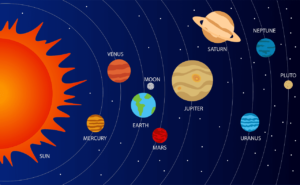The idea of living on Mars has fascinated humanity for decades, and recent advances in space technology have brought this dream closer to reality. Colonizing Mars poses significant challenges, but with careful planning and innovative solutions, it is possible to create a sustainable human presence on the Red Planet. This article delves into the details of how we can live on Mars, exploring the scientific, technological, and logistical aspects of such an endeavor.
1. Understanding the Martian Environment
Martian Atmosphere
Mars has a thin atmosphere composed primarily of carbon dioxide (95.3%), with traces of nitrogen (2.7%) and argon (1.6%). The atmospheric pressure on Mars is less than 1% of Earth’s, making it inhospitable for human life without proper equipment.
Temperature and Climate
Mars is significantly colder than Earth, with an average surface temperature of about -80 degrees Fahrenheit (-60 degrees Celsius). Temperatures can vary widely, ranging from 70 degrees Fahrenheit (20 degrees Celsius) near the equator to -195 degrees Fahrenheit (-125 degrees Celsius) near the poles.
Surface Conditions
The Martian surface is rocky and dusty, with large plains, canyons, and volcanoes. Dust storms are common and can last for weeks, posing challenges for both human habitats and equipment.
2. Transportation to Mars
Spacecraft and Propulsion Systems
Getting to Mars requires advanced spacecraft and propulsion systems. Current missions rely on chemical rockets, but future missions may utilize nuclear thermal propulsion or ion drives to reduce travel time and increase efficiency.
Launch Windows and Travel Time
Missions to Mars must take advantage of optimal launch windows that occur approximately every 26 months when Earth and Mars are closest. Travel time typically ranges from 6 to 9 months, depending on the specific mission profile.
3. Establishing a Habitat
Site Selection
Selecting a suitable site for a Martian colony is crucial. Ideal locations would have access to water ice, be relatively flat, and offer some protection from radiation, such as natural caves or lava tubes.
Habitat Design
Habitats must provide life support, protection from radiation, and a stable environment. Designs include inflatable modules, underground habitats, and 3D-printed structures using Martian regolith.
Life Support Systems
Life support systems must provide oxygen, water, and food. Technologies include closed-loop systems for air and water recycling, hydroponic and aquaponic systems for food production, and waste management systems.
4. Sustaining Life on Mars
Water Extraction and Recycling
Water is essential for human survival. Techniques for extracting water from Martian ice include heating the ice to produce steam and using chemical processes to release water from hydrated minerals. Recycling systems will minimize waste and ensure a sustainable water supply.
Oxygen Production
Producing oxygen on Mars is critical. The Mars Oxygen In-Situ Resource Utilization Experiment (MOXIE) is an example of technology that can convert carbon dioxide in the Martian atmosphere into oxygen through electrolysis.
Food Production
Growing food on Mars requires innovative agricultural techniques. Hydroponics and aquaponics offer solutions for growing crops without soil, using nutrient-rich water and fish waste to support plant growth.
Energy Sources
Reliable energy sources are essential for a Martian colony. Solar panels can provide power, but they must be complemented by other sources such as nuclear reactors to ensure a continuous energy supply during dust storms and long Martian nights.
5. Health and Safety
Radiation Protection
Mars lacks a magnetic field and a thick atmosphere, exposing the surface to high levels of cosmic and solar radiation. Solutions for radiation protection include building habitats underground, using regolith shielding, and developing advanced materials to block radiation.
Medical Care
Access to medical care is vital for a long-term Martian colony. Medical facilities must be equipped to handle emergencies, surgeries, and routine health care. Telemedicine and robotic surgery could play a significant role in providing care from Earth-based doctors.
Psychological Well-being
Living on Mars will be psychologically challenging due to isolation, confinement, and the harsh environment. Strategies to support mental health include virtual reality environments, social activities, and regular communication with Earth.
6. Technological Innovations
Robotics and Automation
Robotics and automation will be essential for building and maintaining a Martian colony. Robots can perform tasks such as construction, mining, and maintenance, reducing the risk to human life and increasing efficiency.
Artificial Intelligence
Artificial intelligence (AI) can assist with various aspects of Martian living, from habitat management to scientific research. AI systems can monitor life support systems, predict equipment failures, and optimize resource use.
3D Printing and In-Situ Resource Utilization (ISRU)
3D printing technology can produce tools, equipment, and even habitat structures using Martian materials. ISRU technologies enable the use of local resources, such as regolith for construction and carbon dioxide for oxygen production, reducing the need to transport supplies from Earth.
7. Governance and Society
Legal and Ethical Considerations
Establishing a colony on Mars raises legal and ethical questions. Issues include property rights, governance structures, and the ethical treatment of colonists. International cooperation and agreements will be necessary to address these challenges.
Social Structure
Developing a social structure for a Martian colony involves creating systems for governance, education, and cultural activities. Ensuring a sense of community and purpose will be vital for the colony’s success.
Economic Opportunities
Mars offers potential economic opportunities, such as mining for rare minerals, scientific research, and tourism. Developing a sustainable economy will be crucial for the long-term viability of the colony.
8. Scientific Research and Exploration
Mars Exploration
Living on Mars will provide unprecedented opportunities for scientific research. Colonists can conduct experiments on the Martian surface, study the planet’s geology and climate, and search for signs of past or present life.
Collaboration with Earth
Collaboration with Earth-based scientists will enhance the research conducted on Mars. Data sharing, joint experiments, and remote support will strengthen the scientific efforts of the Martian colony.
Conclusion
Living on Mars is an ambitious and challenging goal, but with advances in technology and international cooperation, it is becoming increasingly feasible. From understanding the Martian environment to developing sustainable habitats and ensuring the well-being of colonists, every aspect of life on Mars requires careful planning and innovation. By leveraging our scientific knowledge and technological capabilities, we can make the dream of living on Mars a reality, opening a new chapter in human exploration and expanding our presence in the solar system.















